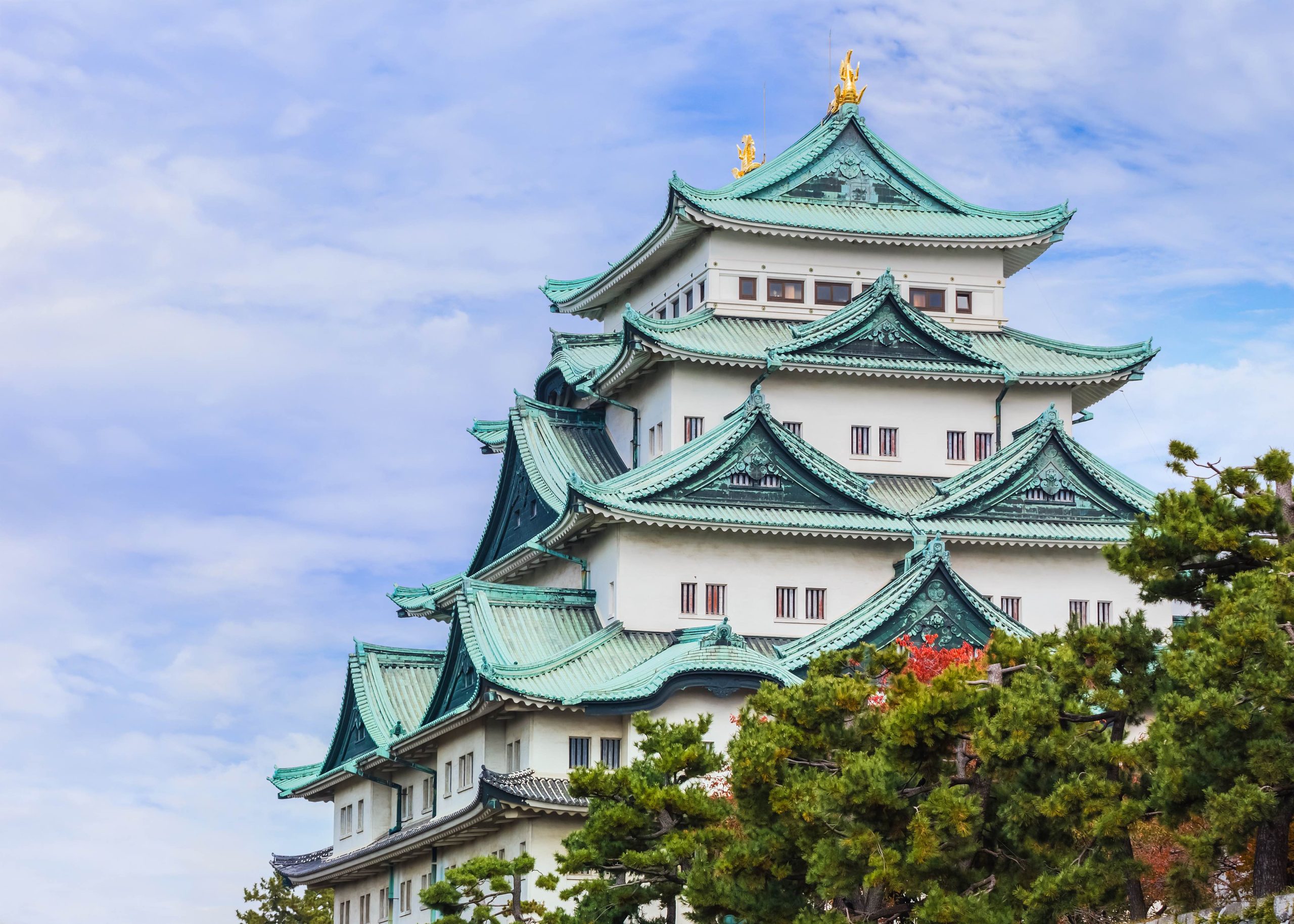https://www.dekitabi.com/itinerary/nagoya-essential-tour
Nagoya Castle: A Symbol of Power and Beauty
https://www.dekitabi.com/attraction/nagoya-castle
Nagoya Castle stands as a testament to Japan’s rich history and architectural brilliance. Built in 1612, this iconic landmark symbolizes the power of the Tokugawa shogunate. The castle’s grandeur is immediately evident from its impressive stone walls and the elegant golden shachihoko (mythical carp-like creatures) that adorn its roof. These features make Nagoya Castle a must-visit destination for history enthusiasts and architecture aficionados alike.
Inside Nagoya Castle, visitors can explore exhibits that delve into the castle’s storied past. The Honmaru Palace, meticulously reconstructed using traditional techniques, showcases exquisite interiors that reflect the opulence of the Edo period. Walking through the palace’s beautifully decorated rooms, you can imagine the lives of the samurai and nobility who once resided here.
The surrounding Ninomaru Garden offers a serene escape with its meticulously manicured landscapes. Stroll through the garden’s winding paths, enjoy the seasonal blooms, and take in the tranquil ambiance. Whether you’re a history buff or simply seeking a picturesque spot to relax, Nagoya Castle provides an unforgettable experience.
Tokugawa Art Museum: A Treasure Trove of Edo-Era Artifacts

https://www.dekitabi.com/attraction/tokugawa-art-museum
The Tokugawa Art Museum is a hidden gem that offers a fascinating glimpse into the cultural heritage of the Edo period. Located in a quiet corner of Nagoya, this museum houses an extensive collection of artifacts passed down through the Tokugawa family. The museum’s exhibits include samurai armor, swords, tea ceremony utensils, Noh theater masks, and exquisite scrolls.
One of the museum’s highlights is the Genji Monogatari Emaki, an illustrated handscroll of “The Tale of Genji.” This national treasure is a remarkable example of Japanese literary and artistic tradition. The intricate details and vibrant colors of the scrolls provide insight into the refined aesthetics of the Heian period.
Visitors to the Tokugawa Art Museum can also explore the adjacent Tokugawaen Garden. This traditional Japanese garden features a central pond, stone lanterns, and meticulously arranged plants that change with the seasons. The garden’s tranquil beauty makes it a perfect place for contemplation and relaxation after immersing yourself in the museum’s rich collection.
Osu Kannon: A Bustling Temple with a Vibrant Shopping District

https://www.dekitabi.com/attraction/hosho-in-osu-kannon
Osu Kannon, a prominent Buddhist temple in Nagoya, is a cultural and spiritual hub. Founded in the 14th century, the temple is dedicated to Kannon, the Buddhist deity of mercy and compassion. The main hall, with its distinctive red architecture, houses a revered statue of Kannon.
Osu Kannon is not just a place of worship but also the heart of a lively shopping district. Osu Shopping Street, which surrounds the temple, is a bustling area filled with shops, cafes, and street vendors. This vibrant market offers everything from traditional crafts and antiques to trendy fashion and electronics. Whether you’re looking for unique souvenirs or simply want to soak up the lively atmosphere, Osu Shopping Street has something for everyone.
Throughout the year, Osu Kannon hosts various festivals and events that attract both locals and tourists. The Osu Summer Festival, with its traditional music and dance performances, is a highlight that showcases the local culture. Visiting Osu Kannon provides a unique blend of spiritual enrichment and modern-day excitement.
Atsuta Shrine: A Sacred Haven with Millennia of History

https://www.dekitabi.com/attraction/hosho-in-osu-kannon
Atsuta Shrine, one of Japan’s most significant Shinto shrines, boasts a history that spans over 1,900 years. Located in a serene forested area, the shrine is dedicated to Atsuta-no-Ōkami, the guardian deity of the Atsuta region. It is also known for housing the Kusanagi-no-Tsurugi, an ancient sword and one of the three Imperial Regalia of Japan.
The shrine grounds are a peaceful oasis where visitors can experience traditional Shinto rituals and admire the natural beauty. The main shrine building, with its thatched roof and wooden architecture, exudes a sense of timeless elegance. As you wander through the grounds, you’ll encounter smaller shrines, sacred stones, and ancient trees that add to the site’s spiritual ambiance.
Atsuta Shrine is also a cultural hub, hosting numerous festivals and ceremonies throughout the year. The Atsuta Festival, held annually in June, is one of the shrine’s major events, featuring traditional music, dance, and a grand procession. Participating in or witnessing these festivals offers a deeper understanding of Japanese cultural traditions.
Exploring Nagoya’s Rich Heritage
Nagoya, with its blend of historical landmarks, cultural treasures, and vibrant districts, offers a unique travel experience. Nagoya Castle, with its majestic architecture and historical exhibits, provides a window into the power and elegance of the Edo period. The Tokugawa Art Museum and its exquisite collection offer a deeper appreciation of Japan’s artistic heritage. Osu Kannon and its surrounding shopping district present a dynamic mix of spirituality and modernity, while Atsuta Shrine’s sacred grounds and rich history invite contemplation and reverence.
When planning your visit to Japan, make sure to include these Nagoya gems in your itinerary. Each site offers a unique perspective on Japan’s history, culture, and traditions, ensuring a memorable and enriching experience for all travelers.


Leave a Reply